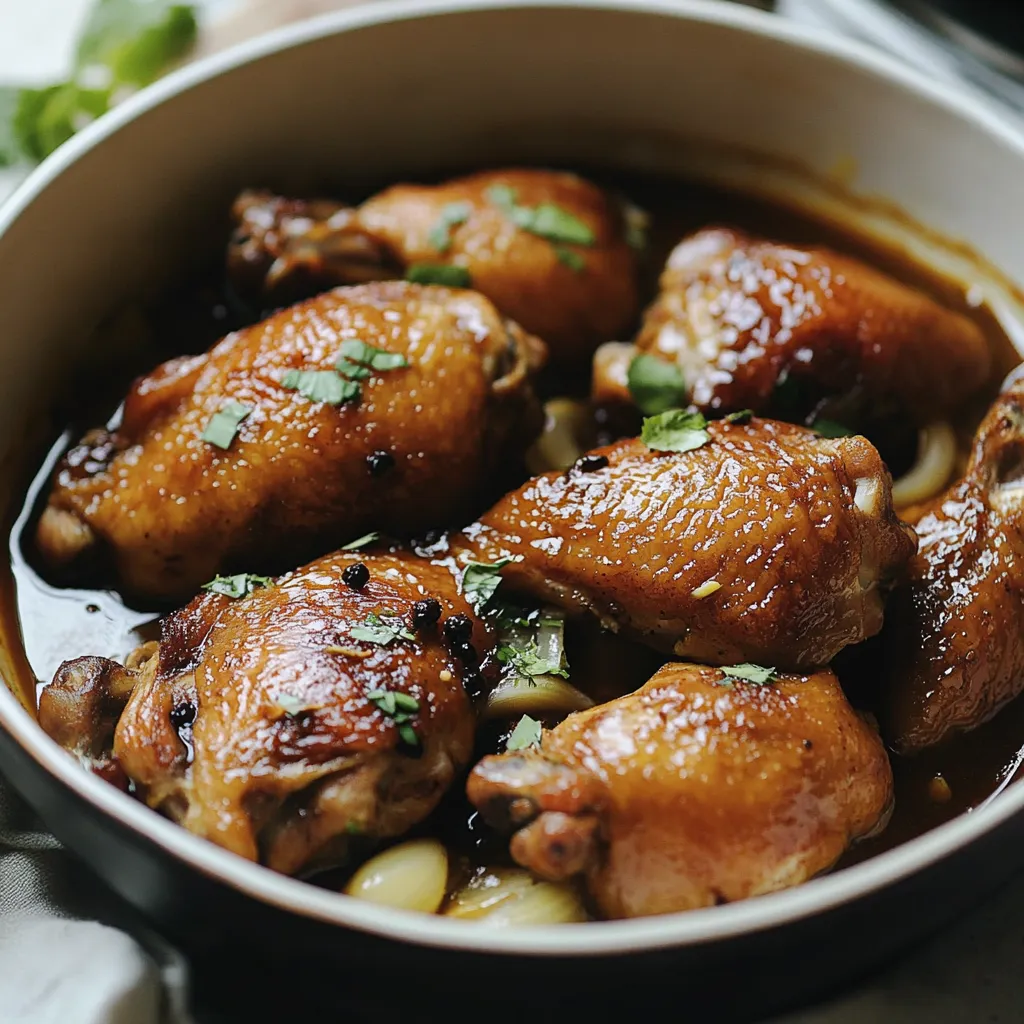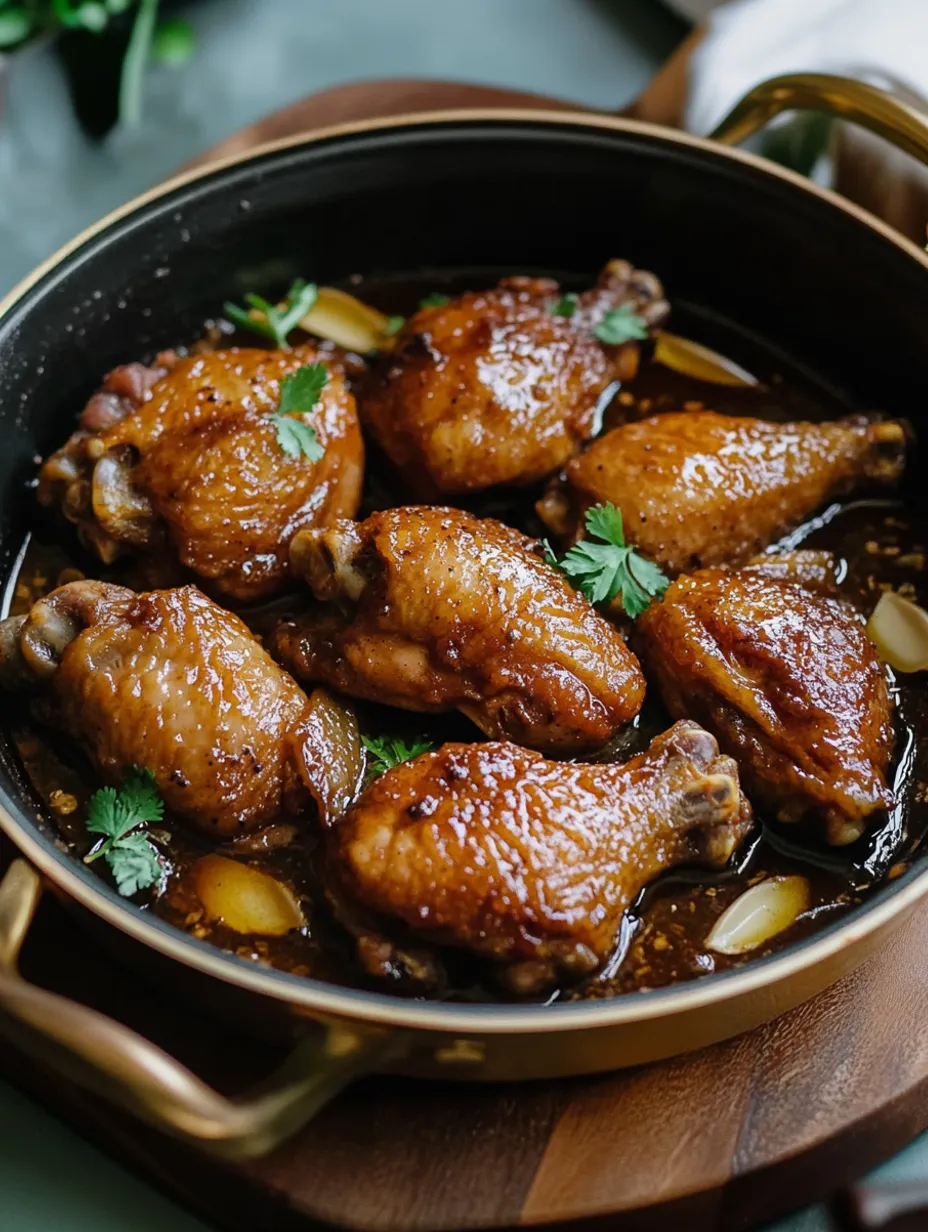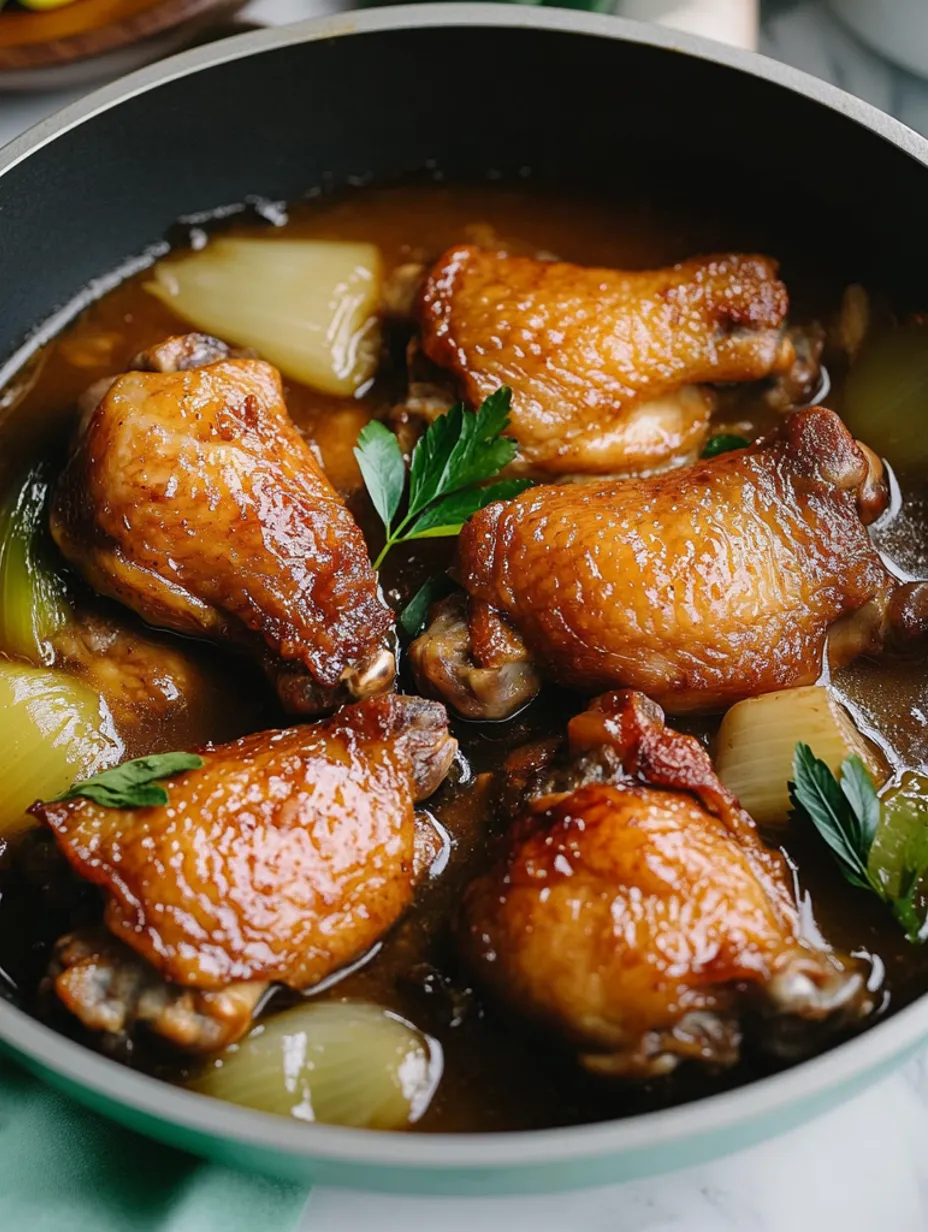 Pin it
Pin it
I stumbled upon this chicken adobo recipe last year when trying to break out of my cooking rut, and it's become a weekly staple in our house. The magic of this dish is how something so simple – just a handful of pantry ingredients – creates such incredible depth of flavor. The tangy-savory-sweet balance makes it completely addictive!
My neighbor stopped by once when I was making this and practically invited herself to dinner after smelling it. Now she texts me whenever she catches that vinegar-soy-garlic aroma wafting from my kitchen!
What You'll Need
- Chicken thighs: Dark meat is non-negotiable here – it stays juicy and tender through the simmering process. I remove the skin for a cleaner sauce, but that's personal preference.
- Cane vinegar: This gives adobo its signature tang. Datu Puti brand is authentic, but white vinegar works in a pinch. Just don't use rice vinegar – it's too sweet and mild.
- Soy sauce: I stick with low-sodium to control the salt level. The regular stuff works too, but you might need to adjust other seasonings.
- Brown sugar: Balances the acidity perfectly. Don't skip this – it's what rounds out the whole dish.
- Garlic: More is better! Whole cloves slowly infuse the sauce with incredible flavor.
- Whole peppercorns: These plump up during cooking and release the most amazing flavor bombs when you bite into them.
- Bay leaves: Adds that subtle herbal note in the background.
 Pin it
Pin it
Cooking Magic
Quick BrowningI start by browning the chicken thighs to develop flavor. A cast iron skillet works perfectly, but any heavy pan with a lid will do. Don't obsess over getting them super browned – just enough to jump-start the flavor.
Building The SauceAfter removing the chicken, I toss in the whole garlic cloves and peppercorns to sizzle briefly. This wakes up their flavors before adding the liquids. The vinegar goes in next – stand back for that first sizzle! – followed by soy sauce, brown sugar, and bay leaves.
Tender SimmeringOnce the sauce ingredients are combined, the chicken goes back in for a gentle simmer. Covering the pan helps keep the chicken moist while it cooks through. I flip the pieces halfway through so they soak up the sauce evenly.
Perfect ReductionThe final step that many recipes miss: removing the lid and letting the sauce reduce. This concentrates all those amazing flavors and creates a silky, spoonable sauce that's perfect over rice.
I grew up thinking good food had to involve complicated techniques or expensive ingredients. This dish taught me otherwise. My Filipino friend's grandmother showed me this recipe, patiently explaining that great cooking often comes from humble ingredients transformed through simple but precise methods.
Serving Ideas
White rice is the traditional partner for adobo, and for good reason – it soaks up that incredible sauce perfectly. For a healthier option, cauliflower rice works surprisingly well. I sometimes add steamed bok choy or green beans on the side for color and nutrition. For a true Filipino experience, serve with hard-boiled eggs on the side.
Make It Your Own
For a creamier version, add a can of coconut milk toward the end of cooking (adobo sa gata). Throw in some bird's eye chilies if you like heat. Add potatoes during the simmering stage for a heartier one-pot meal. Some regions in the Philippines add a splash of 7-Up or Sprite for sweetness and tenderizing!
Storage Smarts
This might be the rare dish that actually improves with age. Store leftovers in an airtight container for up to 5 days. The flavors deepen overnight as the chicken continues to absorb the sauce. Reheat gently on the stovetop or microwave. I sometimes shred the leftover chicken and mix it with the reduced sauce for the most amazing sandwich filling.
 Pin it
Pin it
Pro Tips
- Leave the peppercorns whole – they infuse the sauce better than ground pepper
- If the sauce is too tangy, add a bit more brown sugar to balance
- Don't substitute chicken breasts – they'll dry out during the simmering
When I first tried this recipe, I was shocked at how something so easy could taste so complex. There's a reason this humble dish is considered the national dish of the Philippines – it represents the perfect marriage of indigenous cooking methods with Spanish and Chinese influences. Every time I make it, I'm grateful for how global food traditions give us these incredible flavor combinations that have been perfected over generations.
Frequently Asked Questions
- → What vinegar works best?
- Cane vinegar is traditional, but white vinegar or apple cider vinegar work well too.
- → Is the sugar necessary?
- It's optional but helps balance the tanginess of the vinegar and adds complexity.
- → Can I use chicken breast?
- Thighs are preferred for tenderness, but breasts work with shorter cooking time.
- → What's typically served with adobo?
- White rice is the traditional accompaniment to soak up the flavorful sauce.
- → Can I make this ahead?
- Yes, flavor improves overnight. Reheat gently on stovetop.
